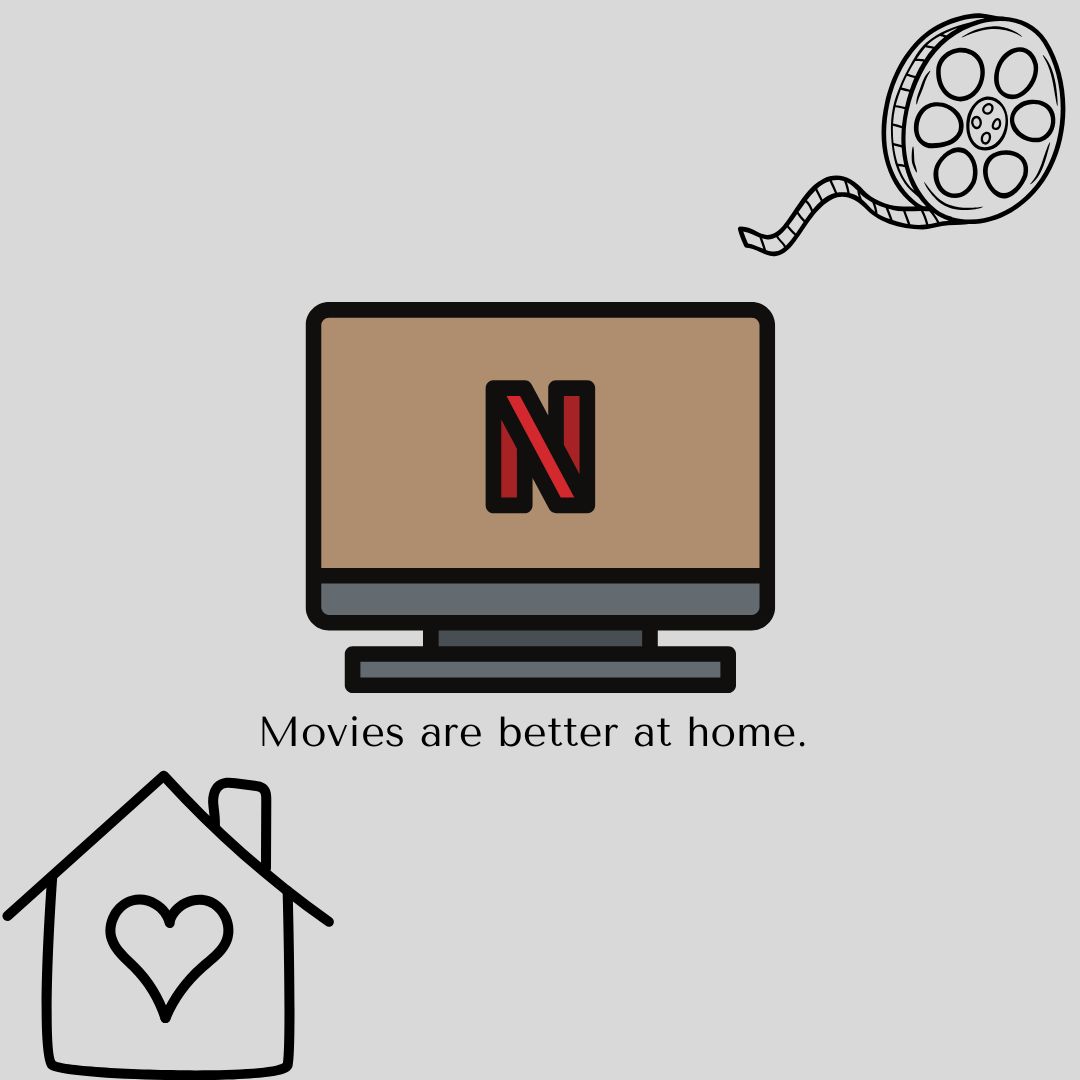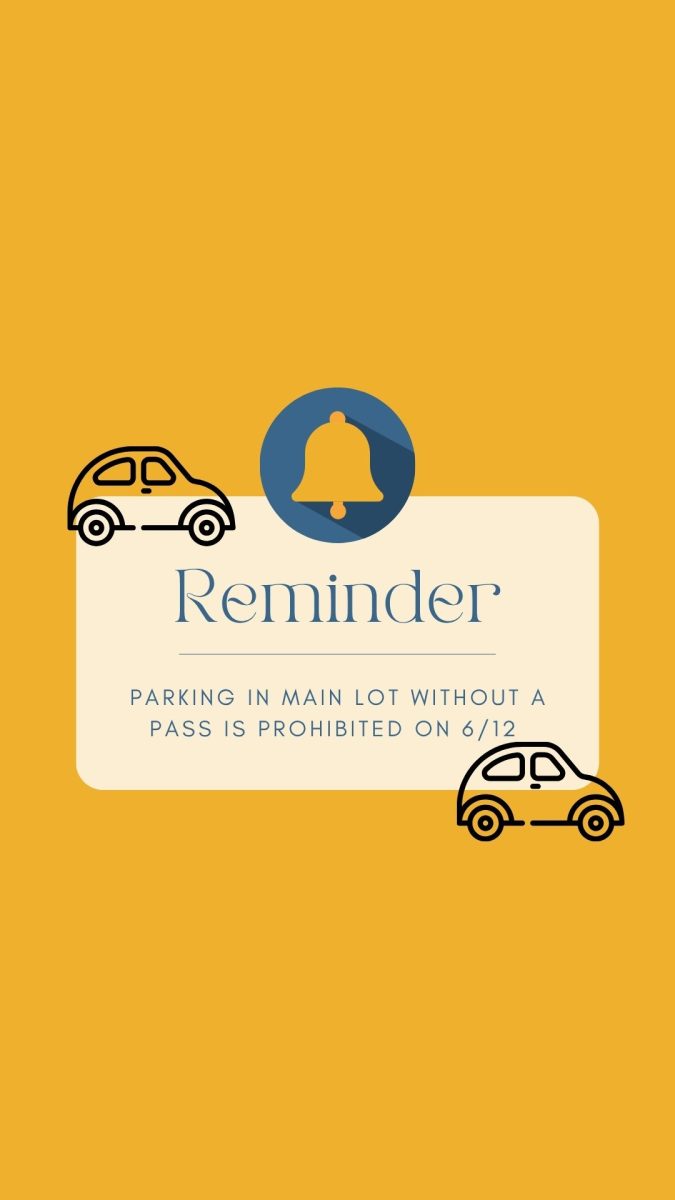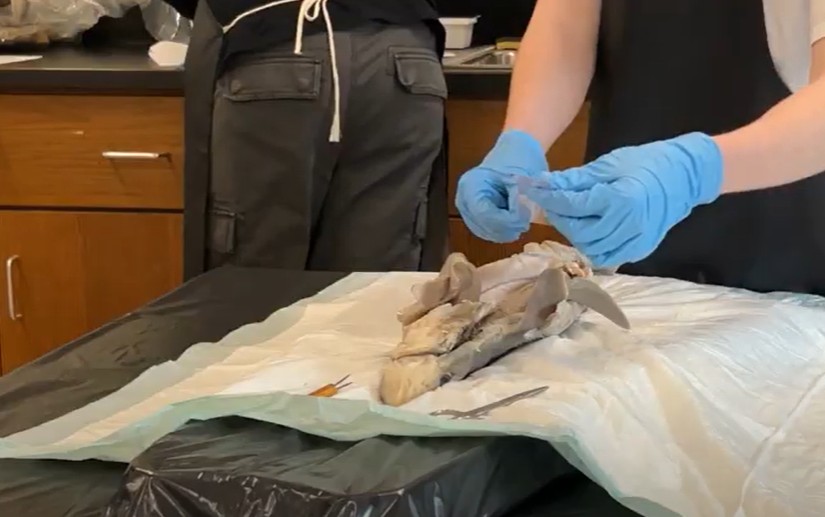There was a blue tinge to the hallways and classrooms this past Friday as LHS students and staff members were wearing blue in support of Autism Awareness.
There was also a smattering of red in the sea of blue from students supporting the movement #RedInstead and choosing to “Boycott Autism Speaks.”
The intention behind the #RedInstead movement is to promote acceptance and empowerment (rather than just awareness) of those with autism. Additionally, the movement heavily criticizes Autism Speaks and states in their website that Autism Speaks “routinely dehumanizes autistic people for personal gain.” They urge people to “join us and tell partners of Autism Speaks to stop funding hate groups!”
The movement’s website also states the following: “Our work is about empowering and supporting people with all disabilities, including adults and children on the autism spectrum, to be recognized as equal citizens in our society and afforded all of the rights and opportunities that implies.”
It is admirable that another group feels so strongly about promoting empowerment and equal treatment for those with autism, which is obviously important. However, any good intentions were lost because the anti-Autism Speaks rhetoric of that organization cast a shadow on those wearing blue in support of those affected by autism.
The Autism Speaks website states their group “has grown into the world’s leading autism science and advocacy organization, dedicated to funding research into the causes, prevention, treatments and a cure for autism; increasing awareness of autism spectrum disorders; and advocating for the needs of individuals with autism and their families.”
It is clear that in their own ways, both organizations want what’s best for those with autism and for those who love someone with autism. Unfortunately, the focus on Friday was diverted from autism to discussions on which color is better: red or blue.
This isn’t Mack Plaque. We are all on the same team.
As journalists, we are taught that when we are taking a stance on an issue or policy that we need to reach out to the opposing side to get all facts and points of view. Communication with key players who might be impacted by a controversial article is crucial to creating a fair argument.
This kind of communication did not happen before Friday.
Some students and teachers wearing blue were blindsided by the negativity (whether intentional or not) brought on by those in red, and they were left wondering if they had done something wrong.
These people—some who Autism Speaks may have even helped at one time—felt hurt to be accused (subtly or not-so-subtly) of having unkind intentions towards people with autism.
‘Light it up blue day,’ a day that was supposed to give support to people who are affected by autism and to create unity within a community, somehow became a day that divided Lancer Nation.
Yes, the #RedInstead supporters may have helped spark a discussion about autism and Autism Speaks, and discussion can be a good thing. After all, the two organizations are both movements with the purpose of helping and supporting those affected by autism.
It’s up to you to figure out where you stand on this issue, but remember this: Before making strong statements about any issue on social media, you should be educated on all areas of the issue. You also need to be prepared to receive comments from others with opposing views.
Neither Autism Speaks nor BoycottAutismSpeaks are inherently wrong. What was wrong is how the day unfolded. The attention on Friday should have been solely on autism and not on the colors being worn.
Autism Speaks and BoycottAutismSpeaks are not the only two organizations you can support. There are plenty of others such as Autism Society and National Autism Association, to name a few.
Also, if you are curious as to where funding and profits of your organization really goes, you have other means to find out such as Charity Navigator.

To see letters to the editor regarding this post, click here.
If you would like to write a letter to the editor on this or any other topic or article, please send it via email to [email protected] or drop it off in room 411.















Tim Carlile
Apr 9, 2016 at 11:23 pm
People boycotted Autism Awareness day simply because it’s associated with Autism Speaks, a flat out awful association that dehumanizes Autistic people and does nothing to help them. Allow me to elaborate:
1. Not a single Autistic person is on Autism Speaks’ Board of Directors or in their leadership. Autism Speaks is one of an increasingly few number of major disability advocacy organizations that refuse to include any individual with the disability they purport to serve on their board of directors or at any point in their leadership and decision-making processes. In large part this is due to Autism Speaks’ public relations strategy of presenting Autistic people as silent burdens on society rather than human beings with thoughts, feelings and opinions.
2. They use fear and stigma to try and raise money off their backs. Autism Speaks uses damaging and offensive fundraising tactics which rely on fear, stereotypes and devaluing the lives of people on the autism spectrum. Autism Speaks’ advertising claims that Autistic people are stolen from our own bodies. Its television Public Service Announcements compare having a child on the autism spectrum to having a child caught in a fatal car accident or struck by lightning. In fact, the idea of autism as a fate worse than death is a frequent theme in their fundraising and awareness efforts, going back to their “Autism Every Day” film in 2005. Indeed, throughout Autism Speaks’ fundraising is a consistent and unfortunate theme of fear, pity and prejudice, presenting Autistic adults and children not as full human beings but as burdens on society that must be eliminated as soon as possible.
3. Very little money donated to Autism Speaks goes toward helping Autistic people and families: According to their 2008 annual report, only 4% of Autism Speaks’ budget goes towards the “Family Service” grants that are the organization’s means of funding services. Given the huge sums of money Autism Speaks raises from local communities as compared to the miniscule sums it gives back, it is not an exaggeration to say that Autism Speaks is a tremendous drain on the ability of communities to fund autism service-provision and education initiatives. Furthermore, while the bulk of Autism Speaks’ budget (65%) goes toward genetic and biomedical research, only a small minority of Autism Speaks’ research budget goes towards research oriented around improving services, supports, treatments and educational methodologies, with most funding going towards basic research oriented around causation and genetic research, including the prospect of prenatal testing. Although Autism Speaks has not prioritized services with a practical impact for families and individuals in its budget, its rates of executive pay are the highest in the autism world, with annual salaries as high as $600,000 a year.
Mrs. Rich
Apr 7, 2016 at 7:57 am
I don’t read this article as taking one side or another. I read as if there shouldn’t be sides. In this school we appreciate all walks of life. We honor those who struggle, we support those who need us and we attempt to educate those who may be in the dark. It is never done with ill will or hurtful words and it is never supposed to divide us. Many, many families, including my family, have moved to this amazing community because they know the amount of support and acceptance here is second to none. Light It Up Blue, though may have been started by Autism Speaks, is not about Autism Speaks and if we focus solely on that that than we are doing our children a disservice. Also, they are not autistic people they are people…with autism. This is an outstanding school because of the students who walk these halls. I’m honored to be teaching here. Please remember that at the end of the day…Together We Are Stronger- Let’s find a way to be stronger together… there is nothing more important than that.
Frank Towns
Apr 7, 2016 at 1:38 am
No Jeremy, this spent 2 paragraphs giving a cherry picked, incriminating selection from the website of BoycottAutismSpeaks, giving it an inaccurate moral representation in the article. This puts AutismSpeaks on the moral highground, and I’m not upset about the article specifically even, my main point was that a website that claims to express free speech has a filtered comment system. I’m not asking for everyone to share my opinion, but to give it a fair representation.
Jeremy Lawrence
Apr 6, 2016 at 9:08 pm
I love the fact that just because people don’t agree with the article they decide that swearing and calling the article garbage is the best option. Also to Frank Towns, the article clearly stated both sides of this issue and why they disagreed with BoycottAutismSpeaks. The article itself was well written, the only problem here seems to be that the comment section is flooded with people who are blaming the writers. Newsflash people, not everyone on earth is going to agree with the same opinions you have, so don’t get mad about it.
Caitlin McKenney
Apr 6, 2016 at 8:36 pm
I would like to thank everybody who is engaging in this discussion. For those of you interpreting the counter-movement as hurtful, I ask you to consider this: many, MANY autistic people are hurt by the actions of Autism Speaks. And I don’t just mean that they are offended. I mean that they have been made to feel like a burden, to feel less than human because of the messages Autism Speaks puts out. I know autistic adults who suffer PTSD from therapies endorsed by Autism Speaks. Other autistic people who feel endangered by supporters wearing blue – and rightfully so, because autistic self-advocates have received death threats for speaking out against Light It Up Blue.
Lancer Nation does not exist as an isolated entity. Students, as well as staff, have the responsibility to be informed consumers and to evaluate the impact of their actions on a larger scale. Do you want to endorse the messages put out by Autism Speaks? Are they using their funding responsibly? What alternative organizations might be more productive? I hope that this year’s conversation will inform future events.
Frank Towns
Apr 6, 2016 at 3:06 pm
Good god this website. How can you take yourself seriously as a journalism website when you filter comments so that
any sense of humor or disapproval is deleted. You pride yourself with opinionated articles, when they’re biased as all hell, showing no respect to anyone with a counterargument. “Speak your mind”, so long as it doesn’t offend anyone, and its OK to us. On the topic of this article, several people have already made good points, that it gives one part in the story the moral high ground, and it beats a dead horse, so why keep it up? Clearly this is a controversial topic and you created this article to try and look like you’re willing to tackle hot topics, but you cant take criticism or humor? F*** off mate.
Barbara Mee
Apr 6, 2016 at 8:52 am
I have to say that I did not personally have anyone comment on my “blue”, but I was distressed when I heard about the boycott or harassment by the red people. As has been said in the editorial, well written if I do say so, why did a line have to be drawn in the sand? Did any of the “red” group actually consider how hurtful their actions might have been? We are a school that has many people touched directly or indirectly by autism.
Ms. Rivet hit the nail on the head in her comment above. I won’t repeat…
Joanne Rivet
Apr 6, 2016 at 7:43 am
Thank you for publishing this article! As a counselor who works with many of the Autistic students in the building, I was very upset by the boycott on Friday. There were many other ways and/or days the “#redinstead” supporters could have shared their message rather than to boycott the efforts of another group. The organizers of the “Light up Lancer Nation Blue” campaign had nothing but pure intentions to bring Autism awareness to LHS. To boycott their effort in the manner they did was rude and disrespectful in my opinion.
James Bernard
Apr 5, 2016 at 5:55 pm
What a garbage biased article. This isnt a debate, or a discussion, this is slamming people that support the #wearredinstead movement. Whoever wrote this should be canned.
Jake Paul
Apr 5, 2016 at 5:51 pm
In the article, you state that people’s focuses should be solely focused on autism and not colors. However, all this article did in the end was demonizing the #RedInstead movement. It genuinely feels as if it’ has degraded to finger-pointing. Not to mention this is also, essentially, just fanning a flame given that they day has already passed. This article accomplishes nothing, and instead just beats a dead horse.